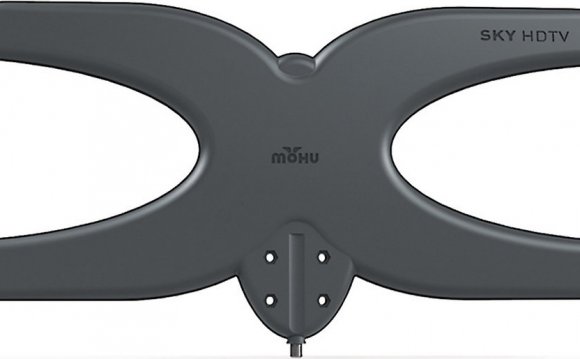
Indoor models range from the old rabbit-ear antennas you used to regularly see perched atop a TV set, to newer models that sport sleek, ultra-flat designs, allowing them to be attached to a window or hidden behind a TV screen. Some are flexible, and a few can even be painted to blend in with your decor. Others have small, rectangular bases that sit upright on a table or cabinet. Since the wood and/or metal within your home's walls might interfere with and degrade digital signals, we’ve found the best placement is usually near a window facing the direction of your local TV transmitters.
What model is best?
We recently had a dozen staffers test 10 popular indoor antennas ranging in price from $8 to $80. (The complete list of tested models, and their price, is included below.) All were designed to pull in VHF (channels 2-13) and UHF (channels 14-69) HDTV signals. All but four of the 12 testers spread across the New York metropolitan area were able to get at least some HDTV channels.
Reception depended on distance from a broadcast tower, the terrain, and the surroundings (nearby houses, buildings, trees, and so on). Some models are directional, so they need to be oriented toward a broadcast tower. Multidirectional antennas, which receive signals from all directions, may be better for urban locations, but they might not pull in more distant stations. “Amplified” antennas can boost signal strength, which can sometimes help pull in more distant stations. But our tests showed they aren’t always more effective than non-amplified models, and they can overload reception from closer stations.
In our tests, performance varied wildly—so much so that we couldn't really rank them in order of performance, as a model that did well for one tester couldn't pick up any TV signals for another. Eight testers were able to receive at least a few channels, and one (who lives in a brownstone building in Brooklyn, NY) was able to pull in nearly 50 stations with several antennas. But four users couldn't get anything due to various environmental conditions [edited 8-2-13]. That underscores how heavily reception depends on your location relative to a TV station, the strength of the broadcasts, and whether there are physical obstructions such as trees, mountains, or buildings between you and the tower.
We also found little correlation between price and performance. The antenna that was generally able to pull in the most stations for most of our testers, the RCA ANT 1650, cost $32. The next best model, the RadioShack 15-254, sells for $35. Both are amplified models and are among the least expensive antennas we tested.
Since the number of channels you’ll receive will depend on your own location and environment, you may need to try several models before finding the best antenna for your needs. That's why we strongly recommend purchasing from a retailer with a no-hassle return policy and reasonable warranty.
But you don’t have to go it alone. There are several websites that can help you determine the reception in your area, and the location of the closest transmitters. (If you're buying an outdoor antenna, some can help you choose a model.) We recommend antennaweb.org, antennapoint.com, TVFool.com, and the FCC's DTV Reception maps.
To help make choosing the right model a bit easier, the Consumer Electronics Association (CEA) and the National Association of Broadcasters (NAB) have created a color-coded labeling standard to classify each of the available outdoor antenna type.








